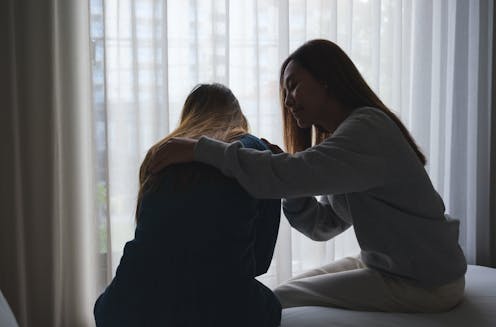
The early days of the new Labour government have given prison reform advocates reason to be hopeful. Two announcements – the appointment of James Timpson as prisons minister and an expanded early release programme – are promising steps towards repairing a criminal justice system that has been devastated by cuts and neglect.
Prison overcrowding is the most pressing issue, with the current population standing at more than 87,000. This significantly exceeds the Ministry of Justice’s “safe and decent” capacity of 79,695 inmates. England and Wales have one of the highest rates of imprisonment in western Europe, almost twice as high as Germany.
Approximately 4% of people in prison in England and Wales are women, and in 2020 72% of female prison admissions were for non-violent crimes. As someone who studies women’s prisons, I hope that plans for change will include revising how we punish and rehabilitate women.
Timpson has said that prisons, especially for women, are a “disaster”. He has noted correctly that prisons often lead women back into the cycle of offending. Women released from prison reoffend more frequently and more quickly than those who serve community sentences.
Women frequently experience a “revolving door” of short prison sentences – too short to engage in meaningful education, training or work opportunities. In 2017, 77% of custodial sentences for women were 12 months or less, with a 71% reoffending rate following such short sentences.
Incarcerated women face complex and severe challenges. They are disproportionately affected by self-harm, accounting for 29% of all incidents (despite making up less that 5% of the prison population). Many are mothers and primary caregivers, impacting an estimated 17,000 children annually.
Violence in women’s prisons is another serious concern, with 469 incidents per 1,000 prisoners in the 12 months to June 2023. The assault rate is more than three and a half times higher than a decade ago, and significantly exceeds that in men’s prisons. This increase in violence is often linked to mental health issues and substance abuse, exacerbated by overcrowding.
More than half of incarcerated women have experienced severe trauma, including domestic violence and childhood abuse. Women in the justice system need tailored support systems that offer trauma-informed care, mental health services and community-based support.
Hope Street in Southampton shows an alternative to prison
The 2007 Corston report was commissioned in response to the deaths of six women at HMP Styal between August 2002 and August 2003. It offered 43 recommendations for improving the treatment of vulnerable women in the criminal justice system. At the time, the government accepted 41 of these recommendations, including limiting imprisonment to serious offences and enhancing health and support services.
In 2013, the House of Commons justice committee reviewed the progress since the Corston report, and found not much progress had been made. The report criticised prisons for treating women like children, and contrasted this to women’s centres, which it argued empower women to take control of their lives.
There are around 40 women’s centres in England and Wales, but there has been a lack of funding and political commitment to open more.
Gender-specific programmes and support are critical to addressing the circumstances and needs of female offenders, including victimisation, trauma, mental and physical health, pregnancy and parenting.
Other approaches – what works for women?
Prison often creates more problems than it solves, especially for women with complex issues, which short sentences fail to address. Rather than building more prisons, investing in comprehensive community support such as women’s centres could be an effective alternative.
Read more: The UK’s prisons aren’t just overcrowded – they need to be better designed
Timpson has advocated for community-based alternatives to imprisonment. One example is Hope Street in Southampton, a residential community where women live with their children.
Hope Street offers a community alternative for women on community orders, remand, or post-release. Several evaluations and research studies have documented the positive outcomes for women who engage with women’s centres, including decreasing reoffending).
The programme will be evaluated over the next few years. If successful, a similar model could be implemented nationwide, reducing the number of women who end up in prison.
Scotland’s Bella Centre also represents a more progressive approach, focusing on community-based custody. This 16-space unit, free from prison bars, helps women reintegrate into society through community contact and access to local services. It is part of a £600 million plan to improve Scotland’s custodial estate.
The government’s focus on addressing the prisons crisis presents a promising opportunity to explore more of these innovative, community-based alternatives to prison, and create meaningful change for female offenders.
![]()
April Smith does not work for, consult, own shares in or receive funding from any company or organisation that would benefit from this article, and has disclosed no relevant affiliations beyond their academic appointment.



